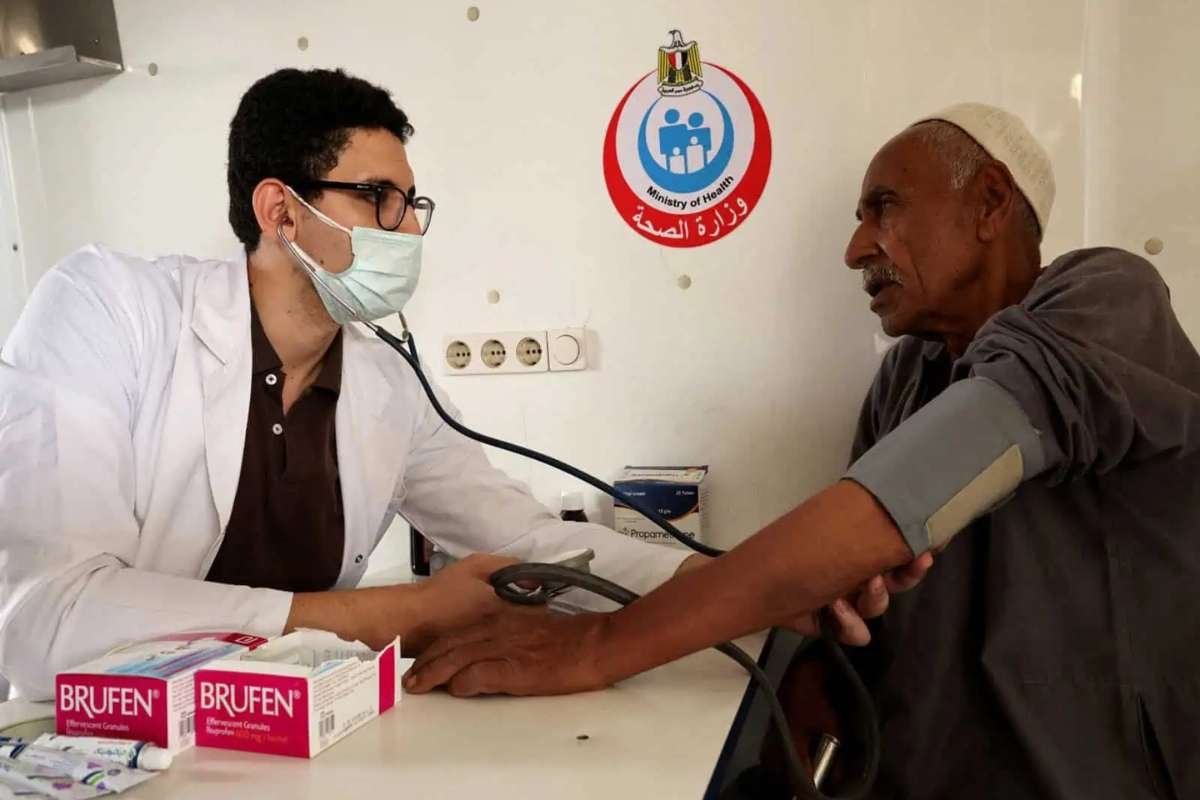Foodborne illness, also known as food poisoning, is a common yet preventable health issue that affects millions of people worldwide each year. This comprehensive guide aims to provide valuable insights into the causes, symptoms, prevention, and treatment of foodborne illness, empowering readers to protect themselves and their loved ones from this potentially harmful condition.
Section 1: What is Foodborne Illness?
It refers to the consumption of contaminated food or beverages that lead to illness or disease. These illnesses can range from mild gastrointestinal discomfort to severe complications requiring medical intervention. Common pathogens responsible for food-borne illness include bacteria, viruses, parasites, and toxins produced by microorganisms.
Section 2: Causes of Foodborne Illness:
1. Bacterial Contamination:
- Bacteria such as Salmonella, E. coli, Campylobacter, and Listeria are common culprits of food-borne illness.
- Contamination can occur during food production, processing, handling, storage, or preparation.
- Improper cooking, cross-contamination, and inadequate hygiene practices contribute to bacterial proliferation.
2. Viral Infections:
- Viruses like norovirus, hepatitis A, and rotavirus can cause foodborne illness.
- Contamination often occurs through contact with infected individuals, contaminated surfaces, or contaminated food and water.
3. Parasitic Infections:
- Parasites such as Cryptosporidium, Giardia, and Toxoplasma can contaminate food and water sources.
- Ingestion of contaminated food, water, or soil can lead to parasitic infections.
4. Toxins:

- Toxins produced by bacteria like Clostridium botulinum and Staphylococcus aureus can cause foodborne illness.
- Improperly stored or processed food can facilitate toxin production, leading to poisoning upon consumption.
Section 3: Symptoms:
1. Gastrointestinal Symptoms:
- Nausea
- Vomiting
- Diarrhea
- Abdominal cramps
- Stomach pain
2. Systemic Symptoms:
- Fever
- Headache
- Muscle achesFatigue
- Weakness
3. Specific Symptoms:
- Bloody diarrhea (associated with certain bacterial infections)
- Jaundice (associated with hepatitis A)
- Neurological symptoms (associated with botulism)
Section 4: Prevention:
1. Practice Proper Food Safety:
- Wash hands, surfaces, and utensils frequently.
- Separate raw meat, poultry, seafood, and eggs from other foods.
- Cook foods to safe temperatures and use a food thermometer.
- Refrigerate perishable foods promptly and thaw foods safely.
2. Follow Good Hygiene Practices:
- Maintain personal hygiene, including handwashing before handling food.
- Avoid preparing food for others when experiencing gastrointestinal symptoms.
- Stay home from work or school if you have symptoms of foodborne illness.
3. Be Mindful of Food Choices:
- Purchase foods from reputable sources and inspect for signs of spoilage.
- Avoid consuming raw or undercooked meats, seafood, eggs, and unpasteurized dairy products.
- Choose pasteurized juices and beverages to minimize the risk of contamination.
4. Educate Yourself and Others:
- Stay informed about food safety guidelines and recommendations.
- Share knowledge about food-borne illness prevention with family, friends, and community members.
- Encourage restaurants, food establishments, and food handlers to adhere to food safety standards.
Section 5: Treatment:
1. Hydration:

- Drink plenty of fluids to prevent dehydration caused by vomiting and diarrhea.
- Oral rehydration solutions can help restore electrolyte balance.
2. Rest:
- Allow the body to rest and recover from the effects of foodborne illness.
- Avoid strenuous activities until symptoms subside.
3. Medications:
- Over-the-counter medications may alleviate symptoms such as nausea, diarrhea, and fever.
- Antibiotics may be prescribed for certain bacterial infections if warranted by a healthcare provider.
4. Medical Evaluation:
- Seek medical attention if symptoms persist, worsen, or are accompanied by severe complications.
- Healthcare professionals can diagnose the specific cause of food-borne illness and provide appropriate treatment.
5. Public Health Interventions:
- Government agencies and public health organizations play a crucial role in preventing and controlling foodborne illness.
- These entities develop and enforce regulations, guidelines, and standards for food safety in various sectors, including agriculture, food production, distribution, and retail.
- Surveillance systems monitor foodborne disease outbreaks, identify trends, and inform policy decisions to protect public health.
- Education and outreach campaigns raise awareness about food safety practices among consumers, food handlers, healthcare providers, and policymakers.
6. Risk Factors:
- Certain populations are at increased risk of experiencing severe complications from foodborne illness, including young children, older adults, pregnant women, and individuals with weakened immune systems.
- Factors such as underlying health conditions, medication use, and lifestyle habits can influence susceptibility to foodborne pathogens and the severity of symptoms.
- Socioeconomic factors, including access to safe food, clean water, healthcare services, and education, also contribute to disparities in food-borne illness rates among different demographic groups.
7. Emerging Issues and Trends:
- Globalization, climate change, and technological advancements have introduced new challenges and opportunities in food safety and security.
- Increased international trade and travel have expanded the reach of foodborne pathogens, highlighting the importance of cross-border collaboration and surveillance.
- Climate-related events, such as extreme weather events and natural disasters, can disrupt food production, distribution, and storage systems, increasing the risk of food contamination and spoilage.
- Technological innovations, such as blockchain, DNA sequencing, and artificial intelligence, offer promising solutions for tracing foodborne outbreaks, detecting contaminants, and improving supply chain transparency.
8. Community Engagement and Advocacy:
- Community-based organizations, advocacy groups, and grassroots movements play a vital role in promoting food safety, environmental sustainability, and social justice.
- These entities advocate for policies and practices that prioritize food access, equity, and dignity for all individuals and communities.
- Community gardens, farmers’ markets, and urban agriculture initiatives promote local food production, reduce food miles, and strengthen community resilience to foodborne hazards.
- Collaboration between diverse stakeholders, including government agencies, nonprofits, academia, industry, and civil society, fosters a holistic approach to addressing foodborne illness and its underlying determinants.
9. Research and Innovation:

- Ongoing research efforts seek to improve our understanding of foodborne pathogens, their transmission routes, and their interactions with the environment and host organisms.
- Advances in microbiology, genomics, epidemiology, and data science enable scientists to identify emerging threats, predict disease outbreaks, and develop targeted interventions.
- Novel technologies, such as rapid diagnostic tests, gene editing tools, and bioinformatics platforms, hold promise for enhancing food safety surveillance, monitoring, and control measures.
- Interdisciplinary collaborations between scientists, engineers, healthcare professionals, policymakers, and industry stakeholders drive innovation and knowledge translation in the field of foodborne illness prevention and management.
Also Read: The Transformative Power of Gut Health and the Microbiome
10. Global Health Implications:
- It is a significant global health concern that transcends borders and affects populations worldwide.
- Low- and middle-income countries bear a disproportionate burden of foodborne diseases due to limited access to safe water, sanitation, hygiene, and healthcare services.
- Addressing food safety challenges requires coordinated efforts at the local, national, regional, and international levels, guided by principles of equity, sustainability, and social justice.
- Global initiatives, such as the World Health Organization’s Food Safety Strategy and the United Nations’ Sustainable Development Goals, provide frameworks for collaboration and action to improve food safety, nutrition, and health outcomes for all.
Conclusion:
Foodborne illness is a multifaceted issue with far-reaching implications for public health, food security, and socioeconomic development. By adopting a comprehensive approach that addresses the underlying determinants of foodborne illness, empowers individuals and communities with knowledge and resources, and fosters collaboration and innovation across sectors and stakeholders, we can work towards a safer, healthier, and more resilient food system for generations to come.









